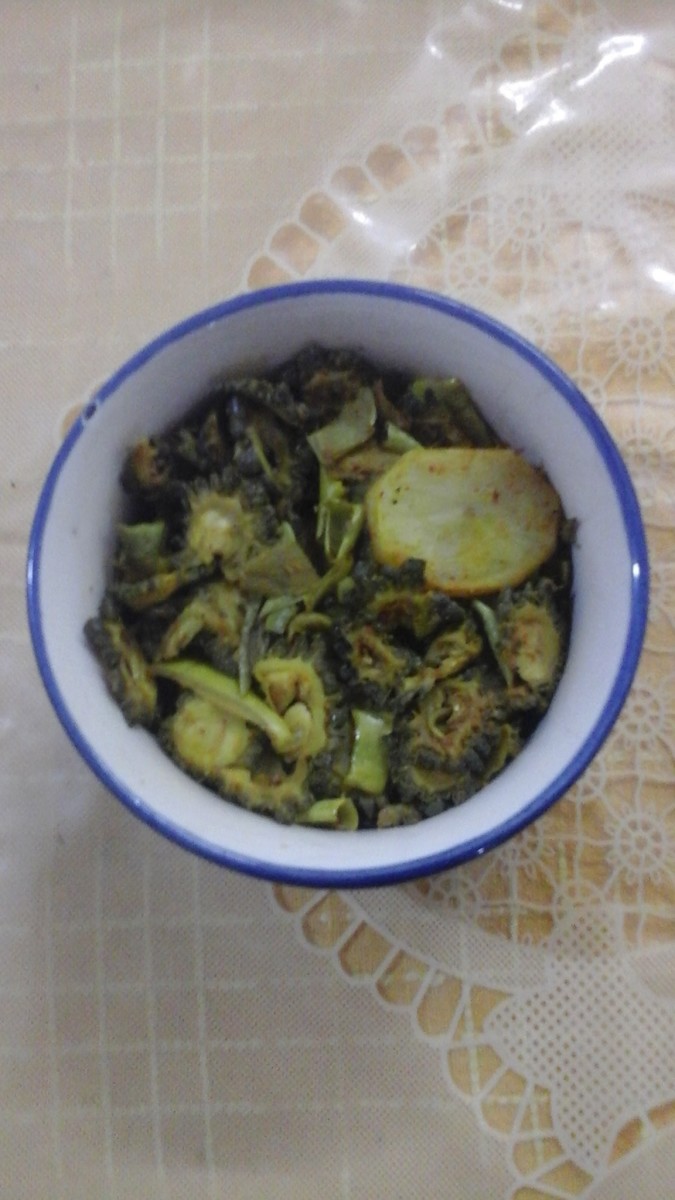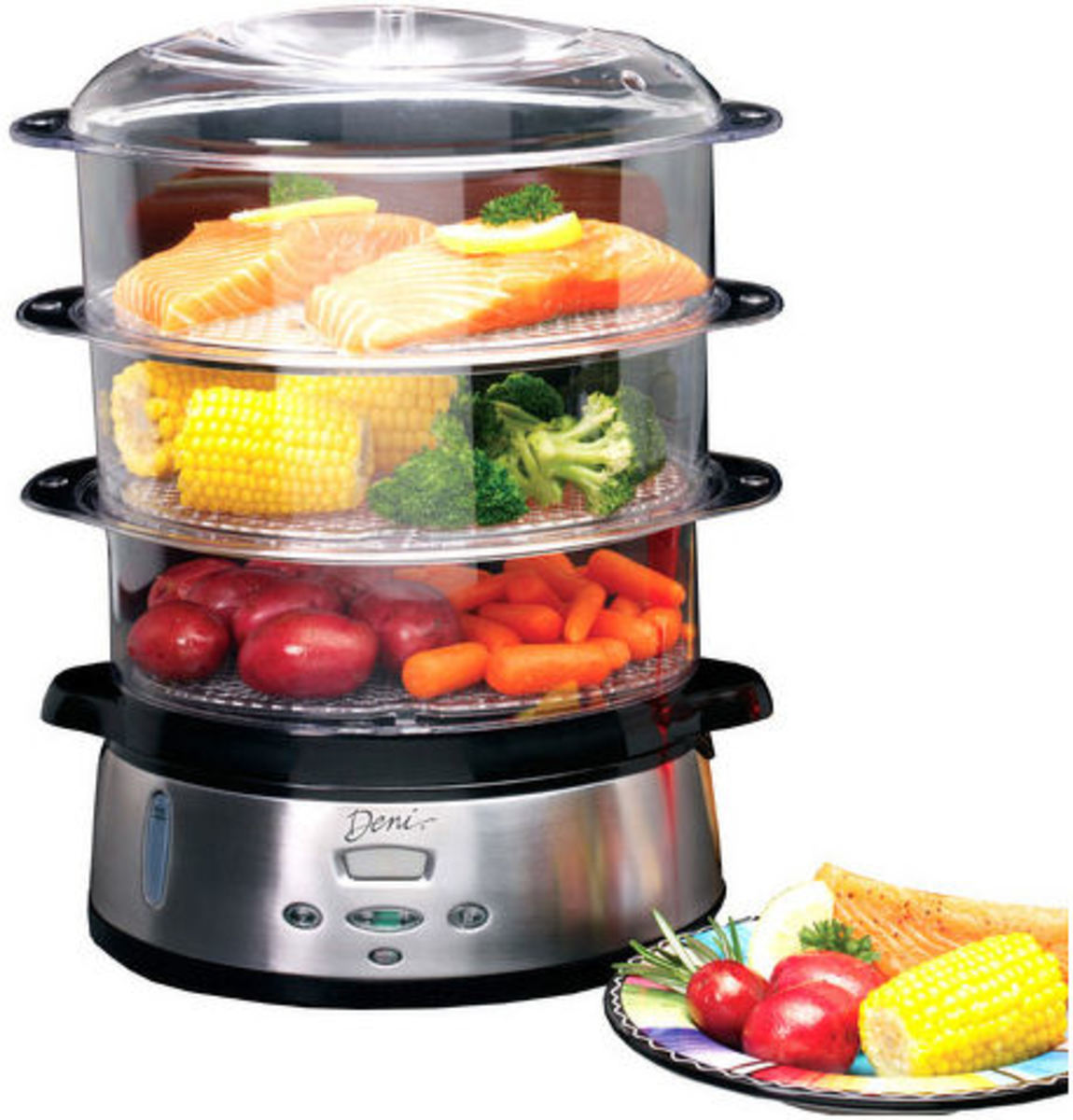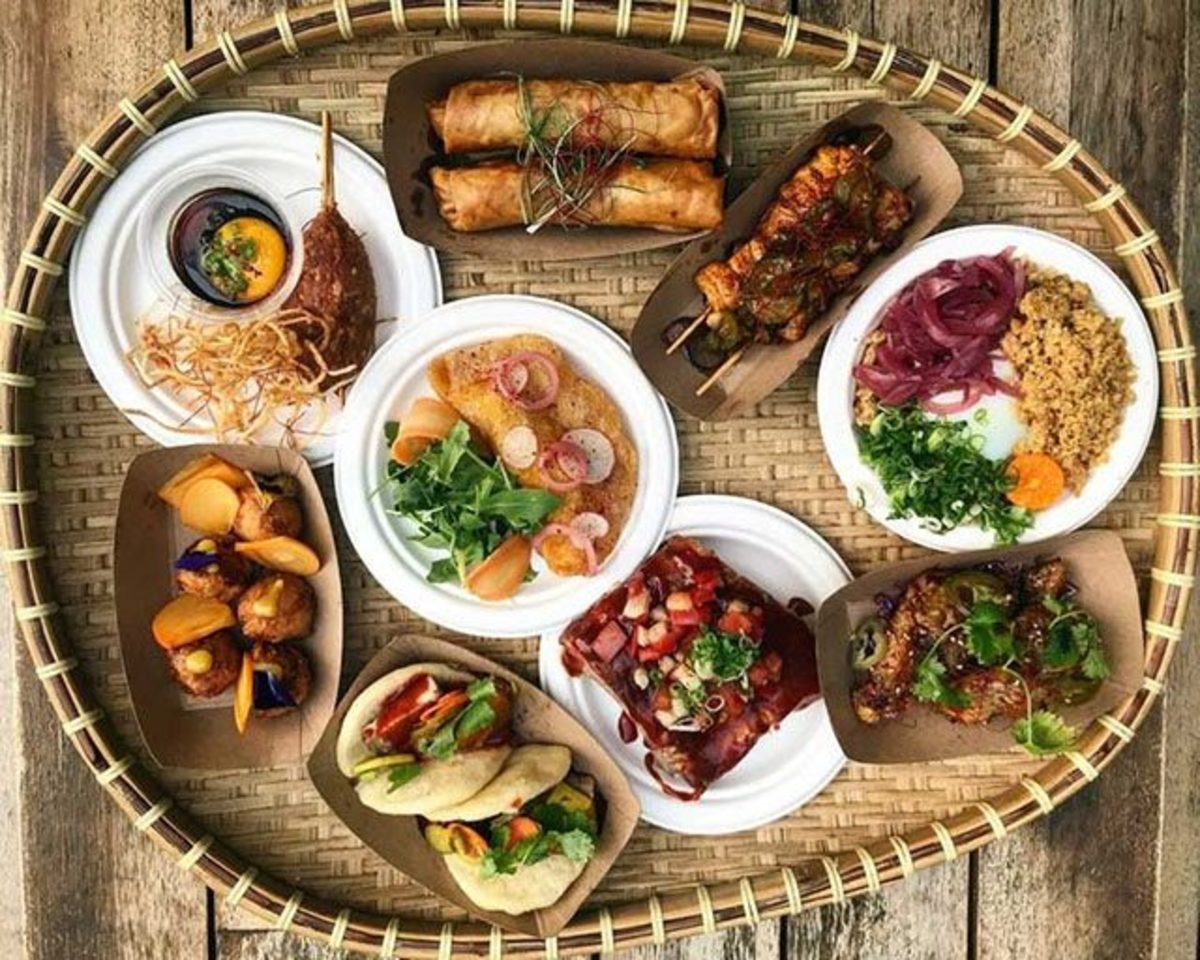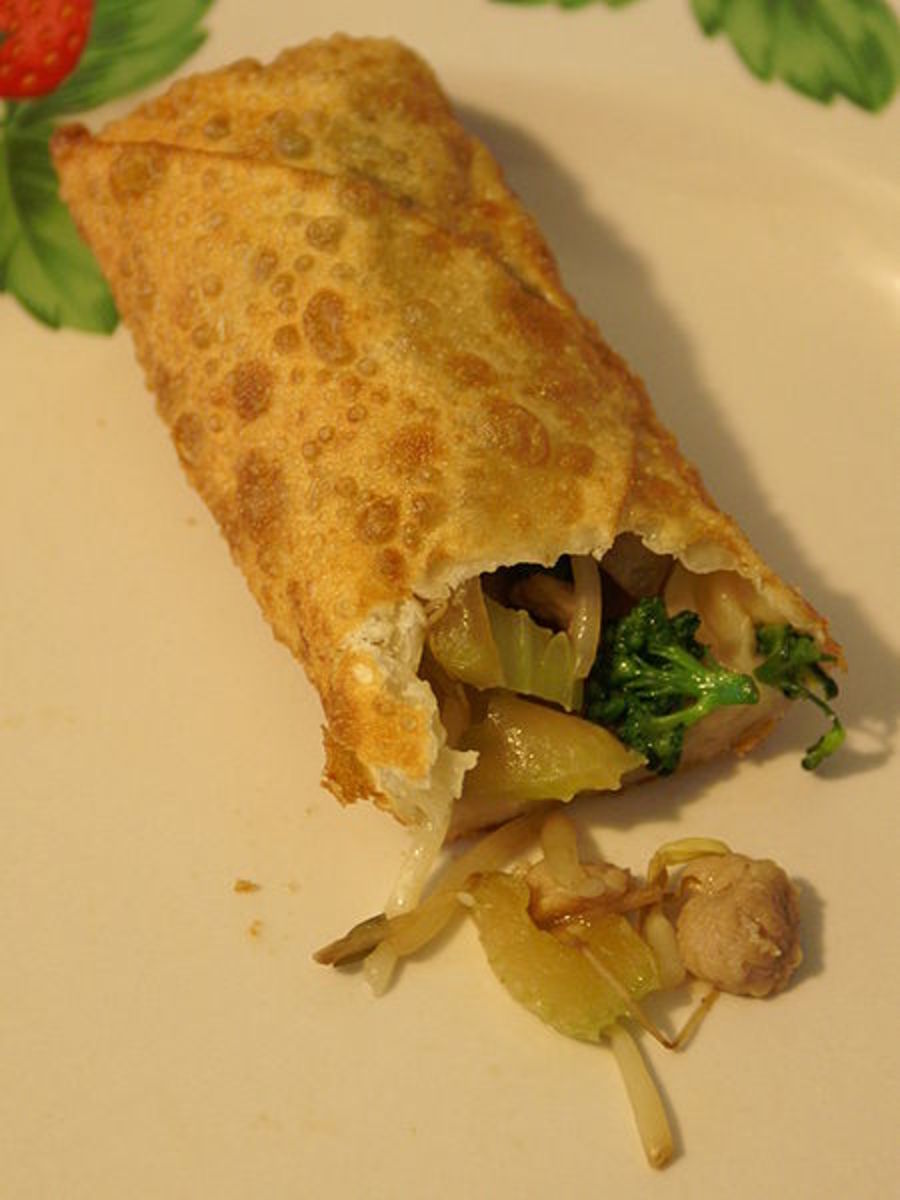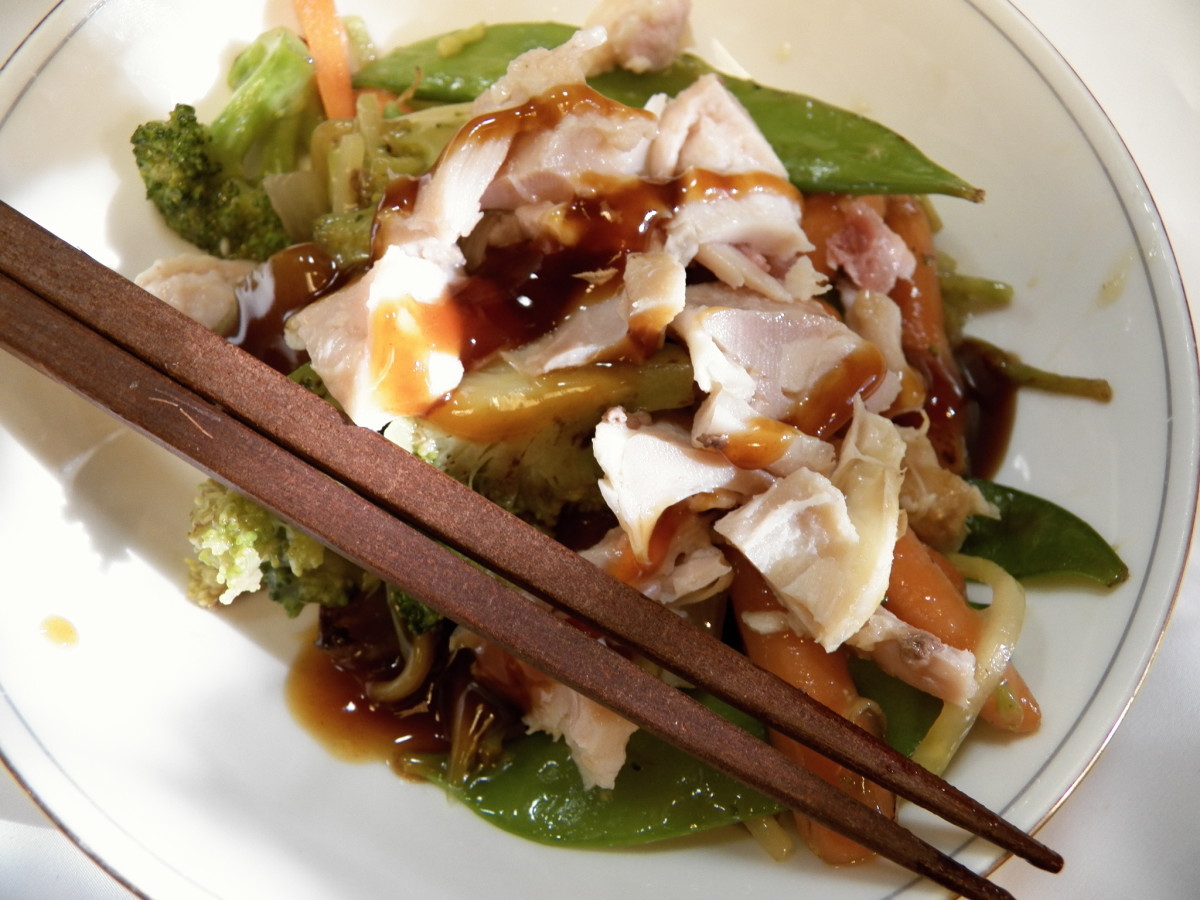- HubPages»
- Food and Cooking»
- World Cuisines»
- East Asian Cuisine
The Chinese Food for Dummies #1
Most people’s experiences with the Chinese food are from either the restaurants in Chinatown or the Chinese restaurants located at the obscured street corners. Majority of the food served there are of Cantonese style. The primary reasons for its popularity are its simplicity, rich flavor and color, mild seasonings, and well blending of vegetables, pork, beef, chicken, and seafood. Regardless of the ethnicity of the customers, each one will find Chinese food an affordable and tasty diversion from the normal daily home-cooked staples. But, this Cantonese style of Chinese food represents only a tiny variety, a tip of the iceberg, of the richness of the Chinese cuisine. Like gunpowder, paper, printing, and compass, Chinese food can be considered as the 5th great invention. It has no equal in the world in terms of variety to choose from, complexity in preparation, taste to work up the appetite, proper mixture of ingredients and seasonings for health purpose, and the aroma that fills the open space.
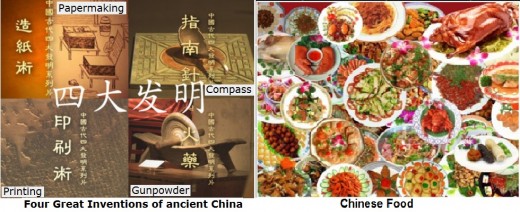
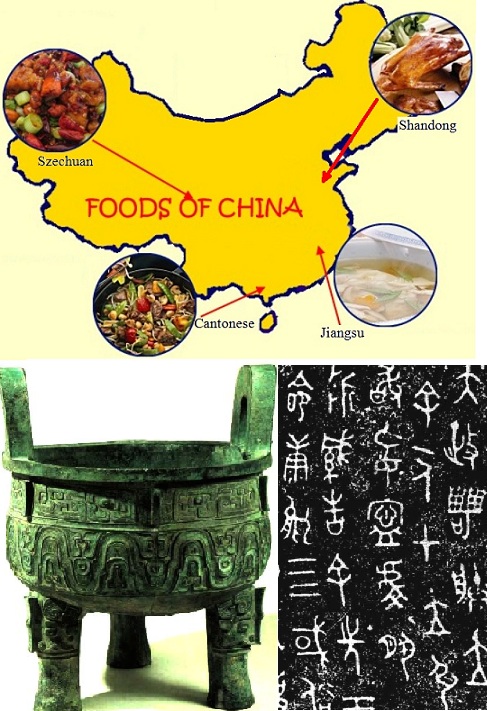
History
Chinese food started its glorious journey in the Zhou dynasty, some 3100 years ago. Based on the archeological finds, special clay pots and bronze utensils were used to prepare daily staples. In addition to simply cooking meat over fire, from the engraved writing on some of the unearthed 3-legged bronze vessels, the cooking techniques were limited to boiling and steaming. Ordinary people’s daily diets were mainly semi-processed grain and wheat mixed with some vegetables. Meats from pork, cow, or rabbit were usually served in the noble families and banquets of the imperial courts. A great deal of times was also spent in the ceremony to honor the ancestry where all available food resources were used and cooked with the best intentions and delicate processes.
As the Zhou dynasty started losing its power around 2700 years ago, thousands of regional territories were consolidated into a handful of large states ruled by powerful warlords. This consolidation enables many of the once isolated territories to share local customs and resources. One immediate benefit was the development of the Chinese food in terms of more methods of preparation and cooking, more variety of meats including fish, chicken, deer, duck, etc., and more edible vegetables that could be cultivated. It was also in this period of times that two main Chinese cuisines came into existence - the Shandong and the Jiangsu . However, it was not until the Chin dynasty with the first unification of China that the 3rd and 4th main Chinese cuisines started to take shape – the Cantonese and the Szechuan .
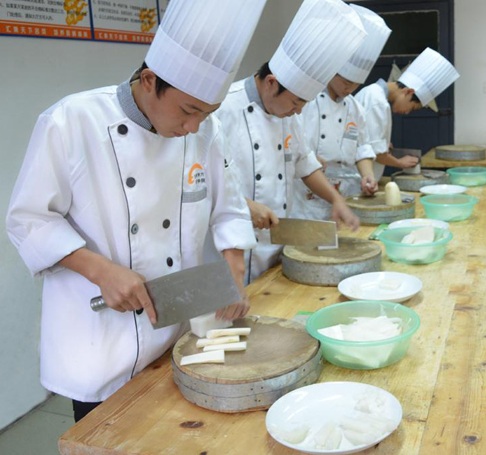
Preparations
Over times, the Chinese people had developed elaborate preparations in order to bring out each food’s unique taste, flavor, aroma, and enticing look. Through experimentations, they found the best combination of ingredients to achieve the desired goal in the single serving size of a dish. The main ingredients are the meat of an animal accompanied with the specific vegetables and seasonings. Before the dish is completed its cooking process, all ingredients have to be meticulously prepared.
1) Due to the size of the dish, the proportion of each ingredient needs to be measured,
2) The meat and vegetables need to be thoroughly washed and cleaned,
3) The meat and vegetable need to be cut, sliced, or diced to allow the seasonings to work their way.
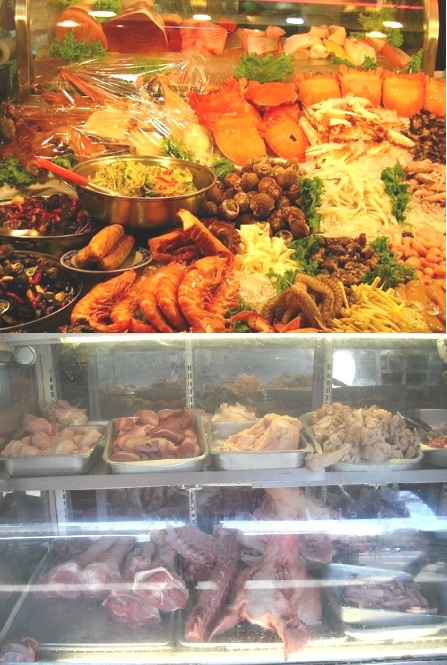
Meats
There is the saying that anything that flies (except the airplane) and stands on four legs (except the table) can be prepared into a tasty dish by the Chinese. Literally there is nothing off the kitchen and no part in an animal is wasted. People know that every part of the animal is edible but not all of them are tasty. Through elaborate preparations, seasonings, and cooking processes, the Chinese cooks have changes that perception. In addition, many exotic and famous dishes are made of animal parts that most people would throw away without a second thought.
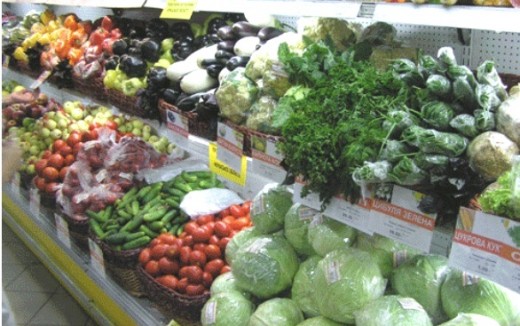
Vegetables
Vegetables of all kind are used in the dish together with the meat. Through experimentation and observation, only certain vegetables can best mixed with certain meat. The use of the vegetable not only helps digestion, flavoring, and nutrition but also adds color to an otherwise bland dish. Colorful celluloses like tomato, green and red pepper, carrot, spinach, and eggplant are used extensively and they mix well with all sorts of meat.
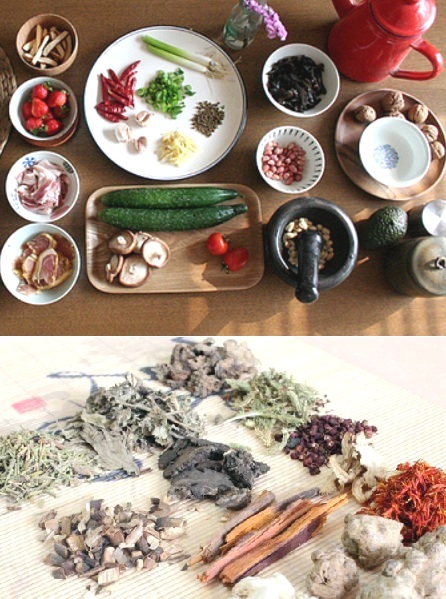
Seasonings
Seasonings are use to give a unique taste and to enhance the flavor and aroma of a specific dish. They play an important role in establishing the identity of each dish of the Chinese food. Common seasonings used are salt, sugar, pepper, soy source, vinegar, and wine. Various plants, roots, and herbs are also added. Some combinations have specific health benefits that can trace their origins to the Chinese herb medicine. How much and what seasonings to add to a specific dish are all meticulously documented as the result of thousands of years of development. Any slight meddling of the recipes will be detected by the picky consumers.
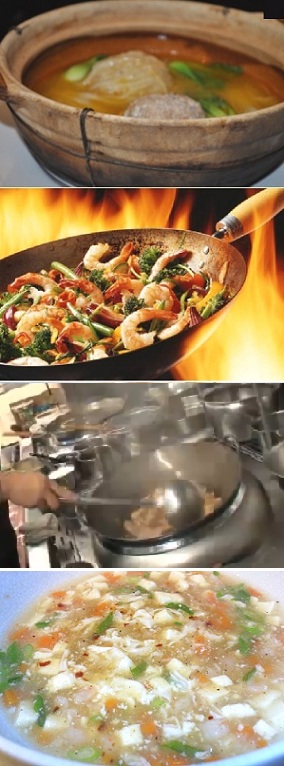
Cooking
It is the last stage to produce an edible Chinese food dish. Cooking is a continuous and fast-paced process as the prepared ingredients are added and mixed in precise order, timing, and cooking temperature. There are many ways of cooking. Each is designed to bring out the most desirable characteristics of a specific dish.
1) Boiling – This is the simplest process. The meat along with the seasonings is cooked in a pot with the proper amount of water. The boiling time depends on the meat for it to be softened. Vegetables are added in stage as some greens take less or longer time to soak in the seasonings.
2) Steaming – The prepared meat, vegetables, and seasonings are placed in the dish to allow them to be cooked only by the steam from the boiling water. This process preserves the flavor of all the ingredients not to be diluted by the water as in boiling.
3) Stir Fry - In this process, vegetable oil is used to cook all the ingredients in a wok (it is easier and has more space to work with than a pan) over flaming fire. This is also the most popular method as the food (meat and vegetable) are not only tasty and crispy but also colorful and aromatic. The process starts by pre-heating the oil in the wok over flaming fire. The seasonings are then mixed and stirred in the hot oil till browning. The meat is then mixed in. A special cooking shovel is used to continuously stir the meat in the seasonings to prevent it from sticking to the wok. When the meat is cooked (pork and chicken take longer time than beef and fish, for example), the vegetables are added in. As soon as they are thoroughly mixed, the fire is turned off and the dish is completed. Some vegetables may need to be rinsed in boiling water to pre-cook them to cut down the frying time in the wok to preserve their color and crispiness.
4) Deep Fry – In this process, a lot of oil is used to fry and seal in the flavor of the meat or vegetable. A lot of times, the meat or vegetable is deep-fried first for a short time before they are stewed or stir-fried with additional seasonings.
5) Stewing – It is similar to boiling but very little water is added as it is turned into gravy with special seasonings. The ingredients are sometimes deep-fried or boiled to half-cooked state before mixing with the gravy and stewing for a specific amount of time.
6) Bake – This process involves cooking the food inside an oven. It is rarely used since all the ingredients and seasonings cannot be mixed as one desires. One exception is the world-renowned Peking Duck.
7) BBQ - This process involves cooking the food directly over flaming fire. It is rarely used since all the ingredients and seasonings cannot be mixed as one desires. One exception is the well-known Roast Pig.
Stay tune for The Chinese Food for Dummies #2.


